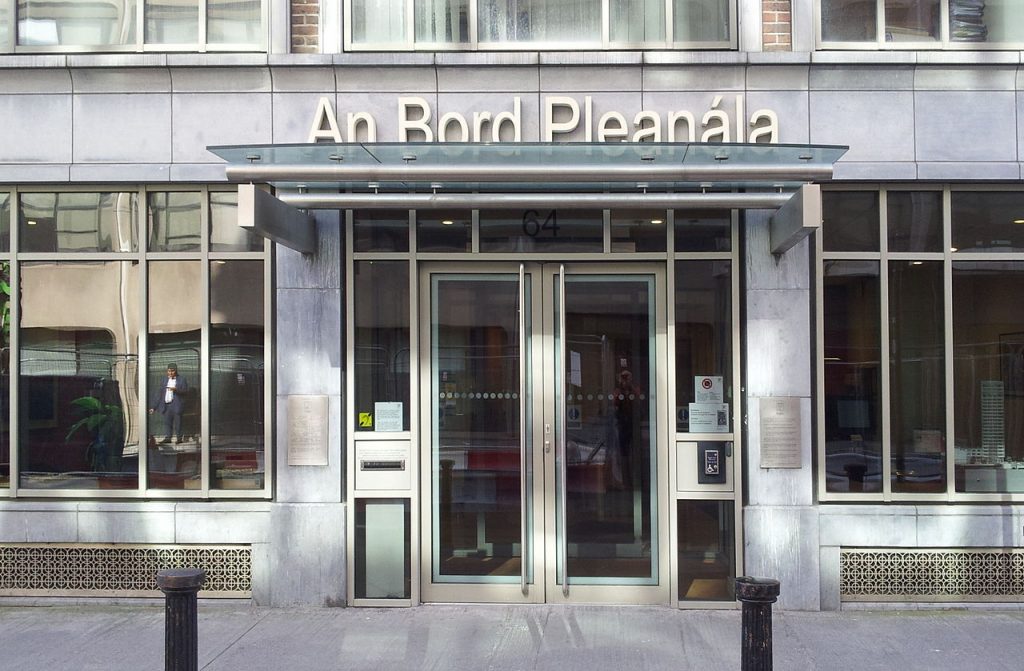Intensive chicken farming in Monaghan under scrutiny

August 22nd, 2019
A decision by Monaghan County Council to grant planning permission for a large-scale chicken farm has been challenged over the potential environmental and air pollution impact of the project.
The proposed farm in Glaslough would have the capacity to house 26,000 broilers – chickens raised specifically for meat production – and two hectares would also be put aside for free-range grazing. The proposed poultry house would be 100 meters long and 20 meters wide.
Friends of the Irish Environment has appealed the decision to An Bord Pleanála over the failure of the local authority to assess the cumulative impact of the project combined with numerous other intensive poultry farms in the county and border region.
The latest national data from 2016 indicates that just over 70 per cent of the 11 million poultry flock in Ireland is found in the border region, with the majority of farms found in Monaghan and Cavan.
FIE argues that the cumulative impact of production units “has been entirely omitted” in the Council’s decision making. This is especially inappropriate, the group said, in light of the fact that there is another approved poultry house of a similar size located on adjacent lands.
Ammonia emissions
The environmental group said that the Council also failed to assess ammonia emissions from the proposed farm that will impact on both the environment and our climate targets.
Ammonia emissions can cause soil and water contamination, are one of the main causes of air pollution in Ireland and can trigger respiratory problems.
Agriculture accounts for 99 per cent of ammonia emissions, with the EPA warning that limiting rising emissions will be difficult due to Ireland`s ambitious targets under Food Wise 2025.
Ammonia emitted into the air is subsequently deposited onto land and water surfaces as nitrogen, often many kilometers from the original source. Excessive depositing of nitrogen can lead to biodiversity loss through the loss of plant species and changes in the ecosystem structure.

Local impact
Locals will be exposed to these issues, FIE said, as the two-hectare field where the 26,000 chickens would graze is located just metres from the nearest dwelling.
In a separate submission prior to the granting of permission, local resident Eamon Kelly outlined his concern that the free-range poultry area would be located within 13 meters of his home, and within seven metres of the original family home being renovated by another family member.
The Council is relying on current planning regulations that require a 100 metre setback distance. Environmental Protection Agency (EPA) guidelines for the poultry industry, however, states that it is preferably for units to be sited more than 400 metres from the nearest neighbouring dwelling.
“All operations on-site shall be carried out in a manner such that air emissions and/or odours do not result in significant impairment of or significant interference with amenities or the environment beyond the site boundary,” the EPA document adds.
The planner’s report disregarded the EPA guidance on the grounds that the words “preferably” and “should” set no absolutes in this regard. The Council also counts the 100-metre setback distance from the chicken housing unit and not the free-range area where an estimated five per cent of chicken manure will be deposited.
Mr Kelly said in his submission that another family dwelling his son plans to use in the future falls within 90 meters of the chicken housing unit. The Council found, however, that the building is currently used for agricultural purposes and, as such, is not currently residential in nature.
FIE said that it is “entirely inappropriate” to start the setback distance from the housing unit, especially as the central portion of the proposed site is vulnerable to flooding from excessive rainfall.
Flooding
Resident objections also pointed out to the Council that the site area is within a floodplain, with the presence of ducks noted over the past two years.
“The proposed site has a long history of flooding with minimum outfall and soakage the problems, and this has been well documented due to restriction of watercourse further down the line,” the submission from Mr Kelly states.
The planner’s report concludes, however, that displaced flood water will be contained with the site and, as such, the proposed works “will not exacerbate or increase the flood risk to the site or the wider area”.
FIE argues that the decision fails to take account of the free-range area of the site that the planner’s report itself states is in a waterlogged area.
FIE’s appeal also claims that the Council is failing to assess the cross-border implications of further intensification of the poultry industry. The planning authority will make its decision on the appeal in early September.
[x_author title=”About the Author”]







